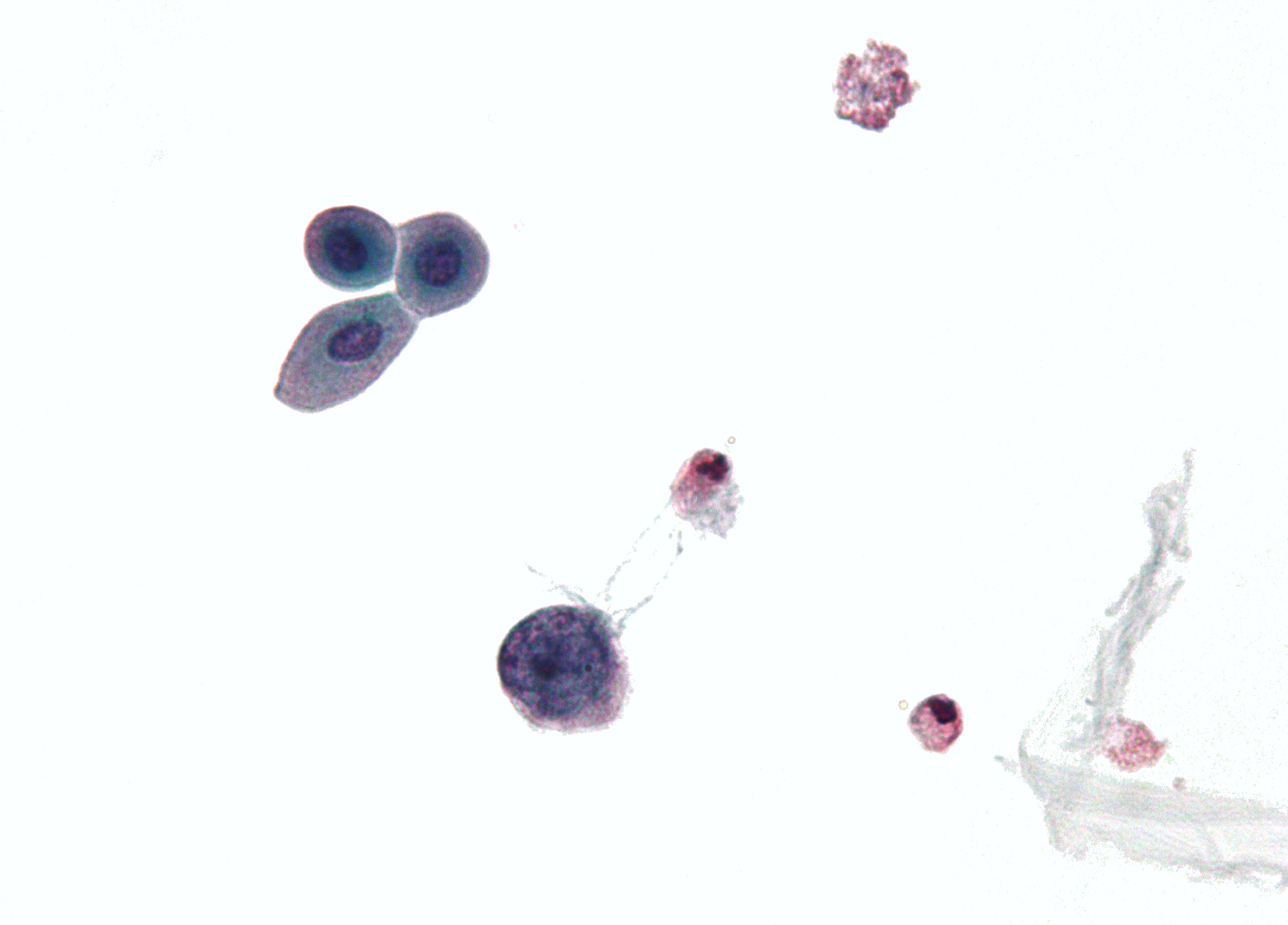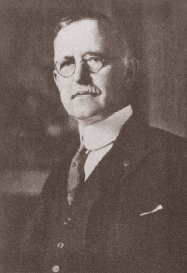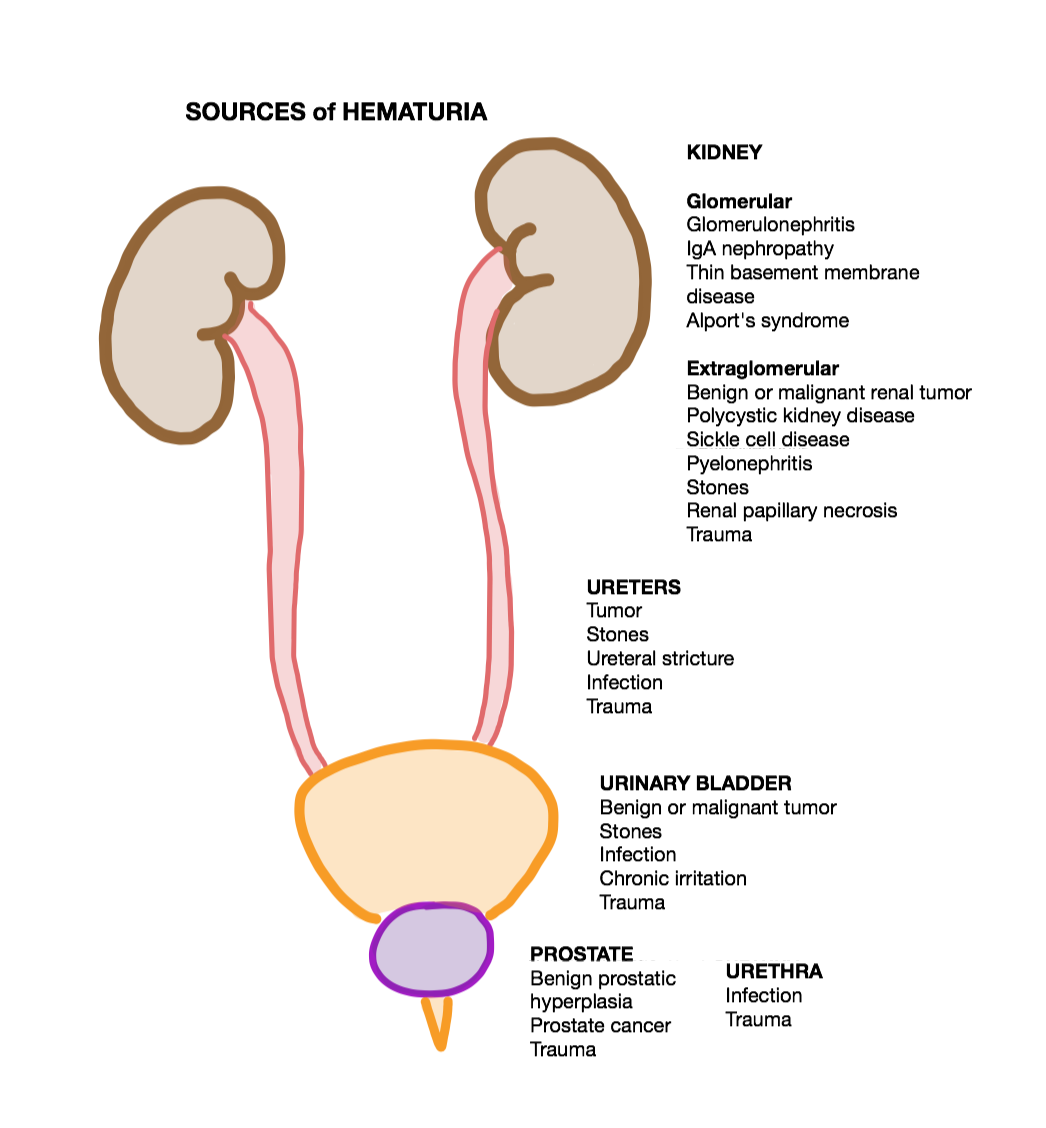|
Hemorrhagic Cystitis
Hemorrhagic cystitis or haemorrhagic cystitis is an inflammation of the bladder defined by lower urinary tract symptoms that include dysuria, hematuria, and hemorrhage. The disease can occur as a complication of cyclophosphamide, ifosfamide and radiation therapy. In addition to hemorrhagic cystitis, temporary hematuria can also be seen in bladder infection or in children as a result of viral infection. Signs and symptoms The symptoms of hemorrhagic cystitis include pain or burning feeling while urinating, frequent need to urinate, loss of control of the bladder, blood or blood clots in the urine, inability to urinate, and fever. Causes Causes of hemorrhagic cystitis include chemotherapy (e.g. cyclophosphamide, Ifosfamide), radiation, or infection. Ifosfamide is the most common cause of hemorrhagic cystitis. Radiation-induced hemorrhagic cystitis develops in similar or smaller patient numbers when compared to cyclophosphamide-induced cases. Adenovirus (particularly serotypes 11 an ... [...More Info...] [...Related Items...] OR: [Wikipedia] [Google] [Baidu] |
Hemorrhaging
Bleeding, hemorrhage, haemorrhage or blood loss, is blood escaping from the circulatory system from damaged blood vessels. Bleeding can occur internally, or externally either through a natural opening such as the mouth, nose, ear, urethra, vagina, or anus, or through a puncture in the skin. Hypovolemia is a massive decrease in blood volume, and death by excessive loss of blood is referred to as exsanguination. Typically, a healthy person can endure a loss of 10–15% of the total blood volume without serious medical difficulties (by comparison, blood donation typically takes 8–10% of the donor's blood volume). The stopping or controlling of bleeding is called hemostasis and is an important part of both first aid and surgery. Types * Upper head ** Intracranial hemorrhage — bleeding in the skull. ** Cerebral hemorrhage — a type of intracranial hemorrhage, bleeding within the brain tissue itself. ** Intracerebral hemorrhage — bleeding in the brain caused by the rup ... [...More Info...] [...Related Items...] OR: [Wikipedia] [Google] [Baidu] |
Ifosfamide
Ifosfamide, sold under the brand name Ifex among others, is a chemotherapy medication used to treat a number of types of cancer. This includes testicular cancer, soft tissue sarcoma, osteosarcoma, bladder cancer, small cell lung cancer, cervical cancer, and ovarian cancer. It is administered by injection into a vein. Common side effects include hair loss, vomiting, blood in the urine, infections, and kidney problems. Other severe side effects include bone marrow suppression and decreased level of consciousness. Use during pregnancy will likely result in harm to the baby. Ifosfamide is in the alkylating agent and nitrogen mustard family of medications. It works by disrupting the duplication of DNA and the creation of RNA. Ifosfamide was approved for medical use in the United States in 1987. It is on the World Health Organization's List of Essential Medicines. Medical uses It is given as a treatment for a variety of cancers, including: * Testicular cancer * Breas ... [...More Info...] [...Related Items...] OR: [Wikipedia] [Google] [Baidu] |
Mesna
Mesna, sold under the brand name Mesnex among others, is a medication used in those taking cyclophosphamide or ifosfamide to decrease the risk of hemorrhagic cystitis, bleeding from the bladder. It is used either Oral administration, by mouth or intravenous, injection into a vein. Common side effects include headache, vomiting, sleepiness, loss of appetite, cough, rash, and joint pain. Serious side effects include allergic reactions. Use during pregnancy appears to be safe for the baby but this use has not been well studied. Mesna is an organosulfur compound. It works by altering the breakdown products of cyclophosphamide and ifosfamide found in the urine making them less toxic. Mesna was approved for medical use in the United States in 1988. It is on the WHO Model List of Essential Medicines, World Health Organization's List of Essential Medicines. Medical uses Chemotherapy adjuvant Mesna is used therapeutically to reduce the incidence of hemorrhagic cystitis, haemorrh ... [...More Info...] [...Related Items...] OR: [Wikipedia] [Google] [Baidu] |
Polymerase Chain Reaction
The polymerase chain reaction (PCR) is a method widely used to make millions to billions of copies of a specific DNA sample rapidly, allowing scientists to amplify a very small sample of DNA (or a part of it) sufficiently to enable detailed study. PCR was invented in 1983 by American biochemist Kary Mullis at Cetus Corporation. Mullis and biochemist Michael Smith (chemist), Michael Smith, who had developed other essential ways of manipulating DNA, were jointly awarded the Nobel Prize in Chemistry in 1993. PCR is fundamental to many of the procedures used in genetic testing and research, including analysis of Ancient DNA, ancient samples of DNA and identification of infectious agents. Using PCR, copies of very small amounts of DNA sequences are exponentially amplified in a series of cycles of temperature changes. PCR is now a common and often indispensable technique used in medical laboratory research for a broad variety of applications including biomedical research and forensic ... [...More Info...] [...Related Items...] OR: [Wikipedia] [Google] [Baidu] |
Immunocompromised
Immunodeficiency, also known as immunocompromise, is a state in which the immune system's ability to fight infectious diseases and cancer is compromised or entirely absent. Most cases are acquired ("secondary") due to extrinsic factors that affect the patient's immune system. Examples of these extrinsic factors include HIV infection and environmental factors, such as nutrition. Immunocompromisation may also be due to genetic diseases/flaws such as SCID. In clinical settings, immunosuppression by some drugs, such as steroids, can either be an adverse effect or the intended purpose of the treatment. Examples of such use is in organ transplant surgery as an anti- rejection measure and in patients with an overactive immune system, as in autoimmune diseases. Some people are born with intrinsic defects in their immune system, or primary immunodeficiency. A person who has an immunodeficiency of any kind is said to be immunocompromised. An immunocompromised individual may part ... [...More Info...] [...Related Items...] OR: [Wikipedia] [Google] [Baidu] |
Nonoxynol-9
Nonoxynol-9, sometimes abbreviated as N-9, is an organic compound that is used as a surfactant. It is a member of the Nonoxynols, nonoxynol family of nonionic surfactants. N-9 and related compounds are ingredients in various cleaning and cosmetic products. It is widely used in contraceptives for its spermicidal properties. Uses Spermicide As a spermicide, it attacks the acrosome, acrosomal membranes of the spermatozoon, sperm, causing the sperm to be immobilized. Nonoxynol-9 is the active ingredient in most spermicidal creams, jellies, foams, gel, film, and suppositories. Lubricant Nonoxynol-9 is a common ingredient of most vaginal and anal lubricants due to its spermicidal properties. A 2004 study found that over a six-month period, the effectiveness, typical-use failure rates for five nonoxynol-9 vaginal contraceptives (film, suppository, and gels at three different concentrations) ranged from 10% to 20%. Condoms Many models of condoms are personal lubricant, lubricated w ... [...More Info...] [...Related Items...] OR: [Wikipedia] [Google] [Baidu] |
BK Virus
The BK virus, also known as Human polyomavirus 1, is a member of the polyomavirus family. Past infection with the BK virus is widespread, but significant consequences of infection are uncommon, with the exception of the immunocompromised and the immunosuppressed. BK virus is an abbreviation of the name of the first patient, from whom the virus was isolated in 1971. This patient - a male - was then 39 years old, who had developed constriction of the ureter after a kidney transplant. Signs and symptoms The BK virus rarely causes disease but is typically associated with patients who have had a kidney transplant; many people who are infected with this virus are asymptomatic. If symptoms do appear, they tend to be mild: respiratory infection or fever. These are known as primary BK infections. Although without any clinical symptoms, footprints of BK virus have been detected in specimens from females affected by spontaneous abortion. Serum antibodies against BK virus have also been fou ... [...More Info...] [...Related Items...] OR: [Wikipedia] [Google] [Baidu] |
Adenovirus
Adenoviruses (members of the family ''Adenoviridae'') are medium-sized (90–100 nm), nonenveloped (without an outer lipid bilayer) viruses with an icosahedral nucleocapsid containing a double-stranded DNA genome. Their name derives from their initial isolation from human adenoids in 1953. They have a broad range of vertebrate hosts; in humans, more than 50 distinct adenoviral serotypes have been found to cause a wide range of illnesses, from mild respiratory infections in young children (the common cold) to life-threatening multi-organ disease in people with a weakened immune system. Virology Classification This family contains the following genera: * '' Aviadenovirus'' * '' Barthadenovirus'' * '' Ichtadenovirus'' * ''Mastadenovirus'' (including all human adenoviruses) * '' Siadenovirus'' * '' Testadenovirus'' Diversity In humans, currently there are 88 human adenoviruses (HAdVs) in seven species (Human adenovirus A to G): * A: 12, 18, 31 * B: 3, 7, 11, 14, ... [...More Info...] [...Related Items...] OR: [Wikipedia] [Google] [Baidu] |
Cleveland Clinic
Cleveland Clinic is an American Nonprofit organization, nonprofit Academic health science center, academic Medical centers in the United States, medical center based in Cleveland, Ohio. Owned and operated by the Cleveland Clinic Foundation, an Ohio nonprofit corporation, Cleveland Clinic was founded in 1921 by a group of faculty and alumni from the Case Western Reserve University School of Medicine. The Clinic runs a main campus in Cleveland, as well as 15 affiliated hospitals, 20 family health centers in Northeast Ohio, 5 affiliated hospitals in Florida, and cancer center in Nevada. International operations include the Cleveland Clinic Abu Dhabi hospital in the United Arab Emirates and Cleveland Clinic Canada, which has two executive health and sports medicine clinics in Toronto."Facts & Figures" Cleveland Clini ... [...More Info...] [...Related Items...] OR: [Wikipedia] [Google] [Baidu] |
Hematuria
Hematuria or haematuria is defined as the presence of blood or red blood cells in the urine. "Gross hematuria" occurs when urine appears red, brown, or tea-colored due to the presence of blood. Hematuria may also be subtle and only detectable with a microscope or laboratory test. Blood that enters and mixes with the urine can come from any location within the urinary system, including the kidney, ureter, urinary bladder, urethra, and in men, the prostate. Common causes of hematuria include urinary tract infection (UTI), kidney stones, viral illness, trauma, bladder cancer, and exercise. These causes are grouped into glomerular and non-glomerular causes, depending on the involvement of the glomerulus of the kidney. But not all red urine is hematuria. Other substances such as certain medications and some foods (e.g. blackberries, beets, food dyes) can cause urine to appear red. Menstruation in women may also cause the appearance of hematuria and may result in a positive urine dips ... [...More Info...] [...Related Items...] OR: [Wikipedia] [Google] [Baidu] |
National Cancer Institute
The National Cancer Institute (NCI) coordinates the United States National Cancer Program and is part of the National Institutes of Health (NIH), which is one of eleven agencies that are part of the U.S. Department of Health and Human Services. The NCI conducts and supports research, training, health information dissemination, and other activities related to the causes, prevention, diagnosis, and treatment of cancer; the supportive care of cancer patients and their families; and cancer survivorship. NCI is the oldest and has the largest budget and research program of the 27 institutes and centers of the NIH ($6.9 billion in 2020). It fulfills the majority of its mission via an extramural program that provides grants for cancer research. Additionally, the National Cancer Institute has intramural research programs in Bethesda, Maryland, and at the Frederick National Laboratory for Cancer Research at Fort Detrick in Frederick, Maryland. The NCI receives more than in funding e ... [...More Info...] [...Related Items...] OR: [Wikipedia] [Google] [Baidu] |
Ifosfamide
Ifosfamide, sold under the brand name Ifex among others, is a chemotherapy medication used to treat a number of types of cancer. This includes testicular cancer, soft tissue sarcoma, osteosarcoma, bladder cancer, small cell lung cancer, cervical cancer, and ovarian cancer. It is administered by injection into a vein. Common side effects include hair loss, vomiting, blood in the urine, infections, and kidney problems. Other severe side effects include bone marrow suppression and decreased level of consciousness. Use during pregnancy will likely result in harm to the baby. Ifosfamide is in the alkylating agent and nitrogen mustard family of medications. It works by disrupting the duplication of DNA and the creation of RNA. Ifosfamide was approved for medical use in the United States in 1987. It is on the World Health Organization's List of Essential Medicines. Medical uses It is given as a treatment for a variety of cancers, including: * Testicular cancer * Breas ... [...More Info...] [...Related Items...] OR: [Wikipedia] [Google] [Baidu] |




